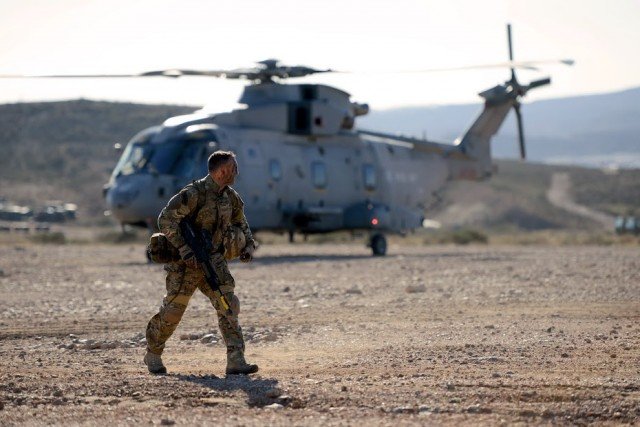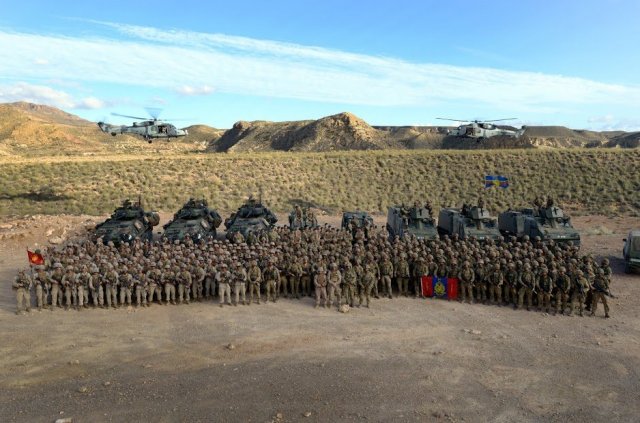
simultaneously in several locations and from different Headquarters to train in a complex environment to improve Alliance’s full spectrum capabilities. – U.S. Army photo by Jason Johnston.
By USAG Stuttgart Public Affairs Office, Story by Sgt. Tatum Vayavananda
U.S. Marine Corps Forces Europe and Africa
Maintaing their ability as the crisis response force, U.S. Marines of U.S. Army Garrison Stuttgart participated in Exercise Trident Juncture 15 to keep their skills on point. Army Sergeant Ian Morales of American Forces Network Stuttgart also reported on the line in Almeria, Spain where Marines tested their accuracy and speed in the largest NATO training mission since 2002. Trident Juncture features more than 30 nations with 36,000 troops training together to improve their capability to pivot towards crises in any direction.
Maintaing their ability as the crisis response force, U.S. Marines of U.S. Army Garrison Stuttgart participated in Exercise Trident Juncture 15 to keep their skills on point. Army Sergeant Ian Morales of Armed Forces Network Stuttgart also reported on the line in Almeria, Spain where Marines tested their accuracy and speed in the largest NATO training mission since 2002.
Trident Juncture features more than 30 nations with 36,000 troops training together to improve their capability to pivot towards crises in any direction.
From Rota, Spain, the U.S. Marine and Navy team offloaded equipment capable of enabling crisis response to support Exercise Trident Juncture 15, Oct. 20, 2015.
“We are using the USNS Button to get the prepositioned equipment on board so 4th [Light Armored Reconnaissance] doesn’t have to embark their gear from all over the United States,” said Master Sgt. Michael Guzman, prepositioning chief of U.S. Marine Corps Forces Europe and Africa.
Prepositioning ships, like the USNS William R. Button, provide Marines the capability to establish and operate anywhere in the world.
“The offload will help 4th LAR conduct Exercise Trident Juncture; being able to offload in-stream, on port, or out at sea helps us keep our amphibious roots,” said Guzman.
The armored vehicles and equipment from the USNS Button will let Marines train in advanced tactics with European Allies during Trident Juncture, the largest NATO exercise in more than 10 years.
“This exercise helps us reassure European Allies and show them that the Marine Corps is here and we can be here shortly to work or assist any NATO Allies,” said Guzman.
Providing this equipment allows the NATO team to work with training techniques beyond basic infantry skills and evaluate their ability to respond to threats together, a primary goal of the exercise. Training evolutions like these expand the familiarity of Marines to the NATO Alliance.
The Marines will conduct a road march of more than 290 miles to southern Spain, conducting field training in Alvarez de Sotomayor before operating as a simulated opposition force for a raid from U.S. and British Royal Marines later in the month.

